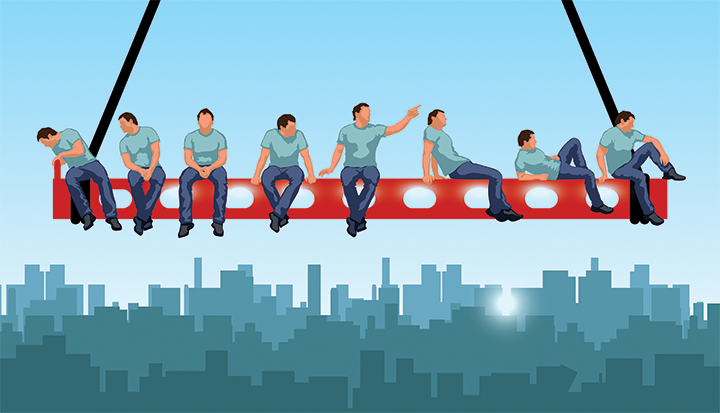Fall Protection Top OSHA Violation for Third Straight Year

OSHA’s top 10 list of violations shows little change from the past two years.
In 2019, as in 2018 and 2017, fall protection remained the top violation, hazard communication was second, and scaffolding was third.
Lockout/tagout was was the number five issue in 2017 and 2018, but moved up to fourth place in 2019.
Respiratory protection, ranked fourth in 2017 and 2018, fell to fifth in 2019.
Paul Magiafico, a local OSHA representative and compliance assistance specialist, said a number of factors contribute to the rankings.
He noted that most of the fall protection citations are issued in the construction industry.
“OSHA conducts about half of their overall inspections in the construction industry.” Magiafico said.
“Since it remains the number one cited standard, compliance safety and health officers are always looking for this hazard in construction, general industry, and maritime because it remains the top hazard for fatal injuries on the job.”
Compliance
Magiafico said OSHA’s Region 1, which encompasses the six New England states, currently has a local emphasis program for falls that requires compliance officers to address fall hazards when observed.
“The compliance directive requires them to notify their supervisor of the hazards and gain approval to conduct the inspection prior to starting the inspection,” he said.
Language barriers often contribute to a lack of training and understanding of the requirements for protecting workers.
“OSHA continues to identify not only the lack of fall protection on job sites but also training deficiencies with regard to fall protection.”
Often, he said, health and safety officers find that language barriers contribute to a lack of training and understanding of the requirements for properly protecting workers from falls.
“This, in turn, leads to more workers being exposed to hazards and more OSHA violations,” Magiafico said.
New Standard
In addition, he said, OSHA has a fairly new standard in general industry on walking working surfaces and fall protection.
As much as possible, OSHA aligns fall protection requirements for general industry with those for construction, easing compliance for employers who perform both types of activities, he said.
“Regarding the shifts on the top 10 lists, typically there are minor shifts within this list from year to year based on the inspections that OSHA conducts and the findings with each,” he said.
“There is no way to predict this movement but for the most part, this list has been consistent in its content with the order changing slightly from year to year.”
OSHA has a new standard in general industry on walking working surfaces and fall protection.
As a best practice, he advises employers to look at engineering controls before using other conventional fall between hazards for fall protection when possible.
Guardrail systems in one of the best forms of fall protection because this will prevent the employee from falling any distance, he said.
Employers must have a fall protection plan and train their employees on the fall protection system the employer chooses.
For more information, contact CBIA’s Phillip Montgomery (860.244.1982).
RELATED
EXPLORE BY CATEGORY
Stay Connected with CBIA News Digests
The latest news and information delivered directly to your inbox.


